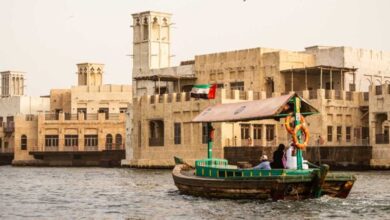Extremist groups challenge

The pace of development of the Northeast will have to be accelerated, employment opportunities will have to be increased so that the youth do not come under the influence of extremist groups. A society divided on the basis of religion and caste has to be kept united. At present, some states of the Northeast have also become centers of religious tension. If these situations are not controlled, then external forces will surely take advantage of it.
Militant activities have again raised their head in Manipur. An Assam Rifles army officer and his family were martyred in a major militant attack last week. This attack in Manipur has created a challenge for the internal security of the country. Earlier in 2015, a major attack was carried out by Naga terrorists in Chandel district of the state, in which eighteen soldiers were martyred.
Amid tensions with China along the Arunachal Pradesh border, this militant attack in Manipur, located on the Myanmar border, is an alarming sign. However, it is not yet clear whether the militant group carried out the attack. The Naga People’s Front and the People’s Liberation Army have claimed responsibility for the attack. This attack has come at a time when efforts are being made for the development of this region by planning to connect the states of the Northeast with the countries of East Asia.
For the past several decades, militant organizations operating in the northeastern states have been a challenge to India. Heavy corruption in the government machinery and increasing drug trade has further strengthened the ground of terrorist organizations. This is one of the major reasons due to which the northeastern states have been facing violence from separatist groups for a long time. Even today the fabric of extremist organizations has not weakened.
However there are other reasons for this. Tensions and disputes between several tribes present in the Northeast have been a major challenge for the central and state governments. These tribes have been clashing over mutual interests. The Naga and the Kuggi, two tribes of Manipur, have been in conflict for decades. Therefore, there is a conflict of interest even among the extremist groups. These extremist groups have their own agenda. The drug trade adds to this conflict. Financial aid from foreign powers prevents them from coming to the peace negotiation table.
One dimension of the recent attack in Manipur is that China is following a strategy to fuel the insurgent groups in the Northeast. For this, China is using the terrorist organizations of the Northeast. It is no secret that China has been helping militant organizations operating in the northeastern states for a long time to put pressure on India over the border dispute. From providing money and weapons to the militant groups of the Northeast, he has also been training them. Separatist groups operating in Nagaland, Manipur and Mizoram have been in touch with China for a long time.
The northeastern states are bordered by China, Myanmar and Bangladesh. China has been fueling separatist groups operating in the Northeast since the 1960s. There is a border dispute between India and China in Arunachal Pradesh in the northeast. China has been claiming Arunachal Pradesh for a long time. Therefore, to maintain pressure on India in this area, China has been taking and giving the help of terrorist groups in the Northeast for decades.
Not only this, China also used the land of Myanmar for this. In fact, China is a permanent problem for India in the Northeast. China’s role in carrying out the attack on the Assam Rifles convoy in Manipur is also being discussed because the attack took place at a time when there is heavy tension between the military forces on the border of Ladakh and Arunachal Pradesh.
There have also been reports of training of members of Naga and Mizo terrorist groups operating in the northeast in China’s Yunnan province and Tibet. Later, as part of a strategy, China shifted the training centers of separatist groups operating in the northeast to Myanmar. However, Myanmar’s policy on militant groups has not been permanent. Under pressure from India, Myanmar has also acted on these militants many times within its borders. Despite this, Naga and Mizo terrorist groups are present in Myanmar. In fact, Myanmar has been under military rule for a long time and India has to bear the brunt of what it is today. Myanmar’s military establishment also helps these terrorist groups at the behest of China, while under pressure from India, it is also seen taking steps against them as a show.
It is worth noting that in 2015, Indian military forces had acted on the bases of militant organizations present in the border of Myanmar. These bases belonged to the Socialist Council of Nagaland. Many Naga militants were killed in this action. In this military action, India was supported by the Myanmar Army. But 2015 was also important for Myanmar. Democracy was strong here. Elections were held in Myanmar in November of the same year. After 2010, pressure from democratic groups increased significantly on the Myanmar army.
The exercise of connecting the northeastern states with Myanmar, Bangladesh and East Asia was beginning to intensify. It also had a direct impact on the militant organizations operating in the northeastern states. In 2019, the armed forces of India and Myanmar carried out military operations in their respective areas against the Kamatpur Liberation Organisation, the Nationalist Socialist Council of Nagaland (Khaplang), the United Liberation Front of Assam and the National Democratic Front of Bodoland. But in the same year the army seized power in Myanmar. The military rulers who carried out the coup were close to China.
The great thing of concern for India at this time is that one thousand six hundred and forty kilometers long time of Myanmar is shared with the eastern states. Myanmar’s military rulers can give aid to militant groups in the Northeast under pressure from China. Therefore, India will have to make a concrete policy regarding the states of the Northeast. Long talks with militant organizations in the northeastern states have not yielded pleasant results. The Naga insurgent groups kept talking to the Indian government, but no concrete solution was found so far.
Another concern for India is the Golden Triangle, a drug-trafficking region that connects Myanmar, Laos and Thailand. Through this route all the intoxicants come to the northeastern states of India. Once upon a time, the drug trade flourished in China through this golden triangle. But China took action and brought the situation under control. The United Nations has also said in its report that drug trafficking in India has increased through this Golden Triangle. Their target is the states of the Northeast.
There is no doubt that the extremist groups of Northeast are also involved in drug smuggling and this is their major source of income. Therefore, multi-pronged efforts will have to be made to combat the extremist groups. The pace of development of the Northeast has to be accelerated, employment opportunities have to be increased so that the youth does not come under the influence of extremist groups. A society divided on the basis of religion and caste has to be kept united. At present, some states of the Northeast have also remained the center of religious tension. If these situations are not controlled, then external forces will surely take advantage of it.
The post Challenge of Extremist Groups appeared first on Jansatta.
,





